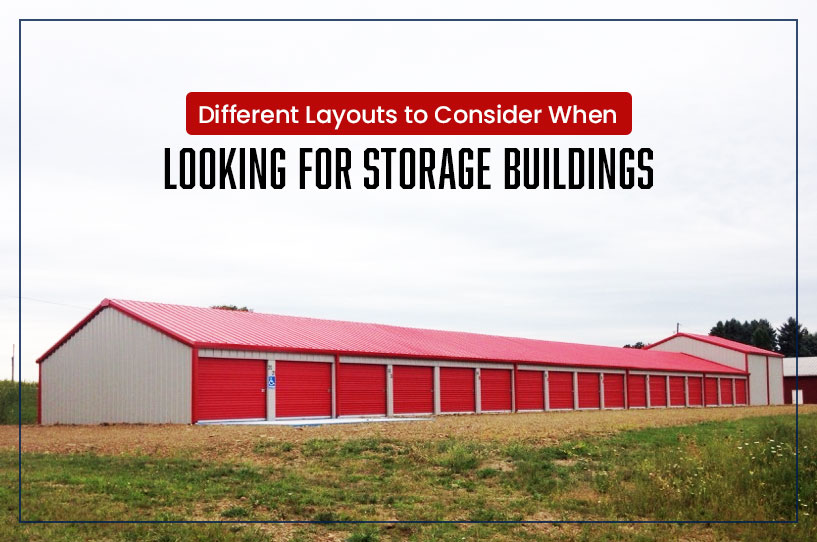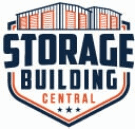Versatility in Action
It’s no secret that metal buildings are among some of the most adaptable structures on the market. After all, you’ll see them used for residential backyard sheds, agricultural buildings, warehousing, and commercial operations of all shapes and sizes. And much of this comes down to their ability to be customized to meet an owner’s needs.
These buildings can be built in many different configurations and can offer a wide variety of layouts. So many, in fact, that it can be hard to filter out all the industry noise and find the right structure for your needs. But that’s okay, because today we’ll give you all the information you need to design the commercial storage building of your dreams, from initial design considerations to various layout options and much more.
If you’re in the market for heavy-duty infrastructure to support your home or business, you’ll want to keep reading for great ideas on how to make your build a success.
Crucial Things You’ll Need to Consider Before Designing Your Commercial Storage Building Layout
Before you can break ground on your new commercial storage building project, you’ll want to cover a few bases first. Here’s what you’ll want to keep in mind when approaching your new business venture:
1. Market Survey
Before embarking on the design of your commercial storage building layout, it’s essential to conduct a thorough market survey. This includes assessing the demand for storage facilities in the area, understanding your target customers’ needs, and identifying your competition. This data will help you determine the type and size of storage units to offer, ensuring you meet the local demand.
2. Land Survey
A detailed land survey is crucial to understand the topography, drainage, and zoning regulations of your site. This information will guide the placement of your storage building and help you determine the optimal use of the available space.
3. Building Size
You should carefully calculate the size of your storage building to maximize space and accommodate different storage unit sizes. Consider the local demand, available land area, and the potential for future expansion when determining the overall size of your facility.
4. Customer Flow
An efficient and customer-friendly layout is essential. Design your storage facility with a logical flow that minimizes congestion, optimizes access to units, and ensures easy navigation for customers and staff.
5. Utilities
Don’t overlook the importance of utilities when designing your layout. Ensure your storage building has essential utilities, such as electricity, lighting, and temperature and humidity control systems for climate-controlled storage buildings. These are critical for maintaining the security, comfort, and accessibility of the facility, and you’ll save by planning ahead of time instead of working backward to install utilities once your structure is complete.
6. Security
Security is a paramount concern for storage facilities. Incorporate robust security features into your layout, including gated access, surveillance cameras, alarms, and secure locks for individual units. A well-planned security system ensures the safety and trust of your customers.
7. Weather Capabilities
Consider your location’s climate and weather conditions when designing your storage building. For steel storage buildings, ensure your structure is built to withstand extreme weather, such as heavy snow accumulation, strong winds, or severe storms, and designed to handle unforeseen issues, such as power loss in the event of a storm.
Different Potential Layouts for Storage Buildings
There are many different commercial storage buildings out there! Depending on your business needs, one style may work better than others. Let’s look at just a few of the potential layouts for your storage metal building:
1. Mono-Slope Buildings (Single Story)
Mono-slope buildings are single-story structures with a sloping roof, typically featuring flat or a single pitch. This design is known for its efficient use of space and straightforward construction and can be tailored to accommodate a variety of storage needs, from small business inventory to larger equipment and valuables.
2. Multi-Level Storage Buildings
Multi-level storage buildings offer an excellent solution for businesses with limited ground space but a growing demand for storage. These buildings are designed with multiple levels or stories, providing ample storage capacity within a relatively compact footprint. They’re a great option for urban areas with minimal square footage availability and numerous potential customers.
3. Climate-Controlled Storage Buildings
Temperature-controlled storage buildings are designed to maintain specific climate conditions, such as temperature and humidity, to protect sensitive items from damage due to environmental factors. These buildings are crucial for storing items like electronics, artwork, documents, and other valuables that require precise climate control.
Frequently Asked Questions About Storage Buildings
When it comes to forming a new business, a savvy entrepreneur will likely have many questions about the process, what to look for, and what to expect. And to help make your process go smoothly, we’ve gathered a few of the most frequently asked questions about metal self-storage buildings:
1. What is the Most Important Thing to Keep in Mind When Designing a Self-Storage Facility?
The most critical factor when designing a self-storage facility is maximizing space utilization. You’ll need to carefully plan the layout of storage units to ensure efficient use of space while providing convenient access for customers. Balancing unit sizes, circulation paths, and security features is essential to create a functional and attractive facility.
2. What Are Some Common Mistakes to Avoid When Designing Your Metal Storage Building?
Some common mistakes to avoid include:
- Overlooking Security: Inadequate security measures can deter customers. Ensure proper lighting, secure access control, surveillance, and unit locks.
- Ignoring Accessibility: Poorly designed layouts can lead to congestion and inconvenience. Focus on efficient traffic flow and easy access to units.
- Neglecting Climate Control: If your location experiences extreme weather, consider offering climate-controlled storage buildings. Neglecting climate control can limit your facility’s attractiveness to certain customers.
- Underestimating Market Research: Failing to perform the necessary due diligence can be costly. You’ll need to conduct thorough market research to understand local demand, competition, and customer preferences. Use this data to determine your business’ potential size and financial capabilities.
3. What Are the Best Materials to Use When Building a Steel Storage Building?
Steel is the preferred material for constructing self-storage metal buildings. It offers strength, durability, and resistance to elements and pests. The material is easy to maintain and can be customized to fit a wide variety of applications.
4. What Are Some Safety Features to Keep in Mind When Designing My Self-Storage Facility?
Safety is paramount for a self-storage facility. Essential safety features include:
- Gated Access: A secure gate with controlled access helps keep unauthorized individuals out.
- Surveillance Systems: Surveillance cameras and alarms enhance security and deter potential intruders.
- Ample Lighting: Adequate lighting in common areas and around storage units promotes a sense of safety and helps deter criminal activity.
- Fire Safety: Install fire detection and suppression systems to protect both your facility and the stored items.
5. How Do I Make My Self-Storage Metal Building More Energy-Efficient?
To make your self-storage facility more energy-efficient, you’ll need to:
- Opt for Insulation: Proper insulation reduces temperature fluctuations, making it easier to maintain climate-controlled units.
- LED Lighting: Use energy-efficient LED lighting in common areas and inside storage units.
- Solar Panels: Consider incorporating solar panels on your facility’s roof to reduce energy costs and minimize your carbon footprint.
- Reflective Roofing: Choose reflective roofing materials to reduce heat absorption and cooling costs.
Also Read – Climate-Controlled Storage Building For The Winter?
Grab Your Next Storage Building from Storage Building Central!
With a dedication to quality and high-grade materials to back it up, Storage Building Central is proud to be a premier choice for all styles of metal buildings. From self-storage buildings to temperature-controlled storage structures, we do it all and deliver results that endure.
We back our structures up with industry-leading warranties and offer flexible financing options and RTO plans that make owning a building easy on any budget. So, no matter what project you take on, you’ll know you’ve got a building that can keep up.
So, what are you waiting for? Contact Storage Building Central today at +1 (844) 315-3151, and let our team of building experts help you find the residential, commercial, or agricultural building you’ve always wanted.


